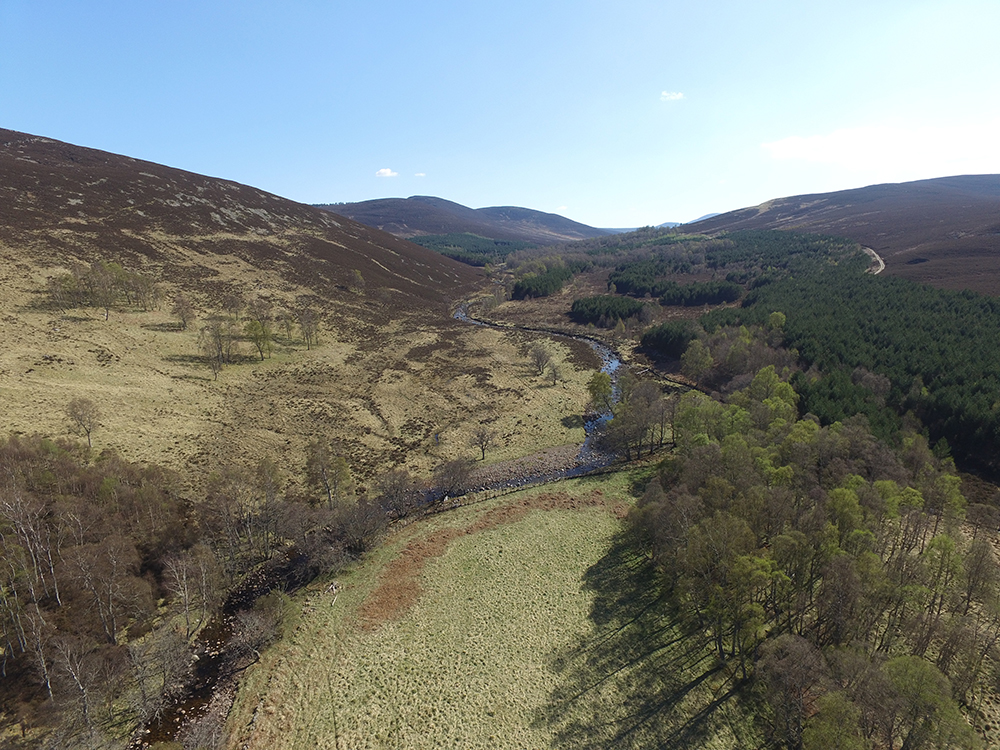
River temperature is of great importance to the growth and survival of a range of iconic fish species such as Atlantic salmon and Brown trout. However, there are concerns that climate change could increase water temperatures, altering the thermal suitability of UK rivers to native species. As a result, better understanding of the impacts of a warming climate on UK rivers is urgently required.
Research by the University of Birmingham’s Dr Stephen Dugdale and Professor David Hannah, working in collaboration with Dr Iain Malcom from Marine Scotland Science (MSS), have developed a novel methodology to simulate the impacts of tree cover on stream temperature.
The team used drone to obtain high-resolution aerial photography of Girnock Burn, a tributary of the Aberdeenshire River Dee where MSS has monitored salmon populations for over 50 years. Using a technique called ‘structure-from-motion photogrammetry’, which enables the extraction of 3D data from 2D photos (in much the same way as stereo vision allows humans to perceive depth), we were able to generate a highly accurate 3D map of tree heights in the lower Girnock Burn. By inputting this tree height data into a computer model that simulates the impacts of shade on stream temperature, we were subsequently able to highlight the extent to which tree shading reduces stream temperature in Girnock Burn.

3D ‘structure-from-motion’ map of Girnock Burn showing forest cover
View Dr Stephen Dugdale's academic profile